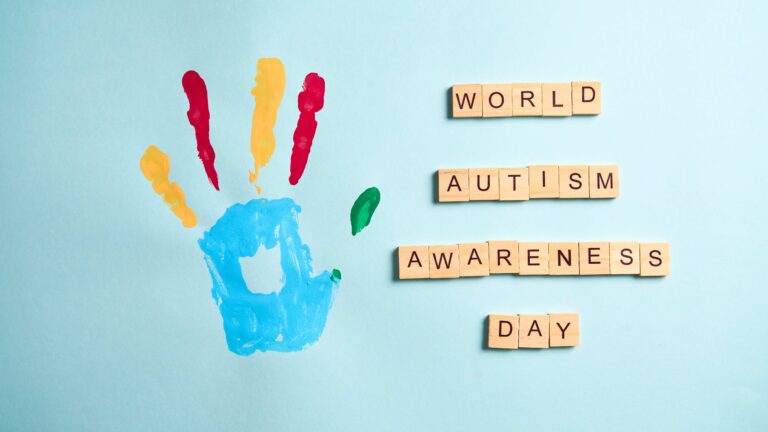Table of Contents
What are the current autism rates in children?
The release of the 2025 CDC report on autism rates in children has shed light on the growing prevalence of autism spectrum disorder (ASD) among children in the United States. According to the updated data by the Centers for Disease Control and Prevention, 1 in 31 children are now diagnosed with ASD. For parents, educators, healthcare professionals, and autism advocates, these findings carry profound implications for how we identify, support, and nurture children on the autism spectrum.
So, what are the current autism rates in children? This post by ABA Centers of Rhode Island will explain the key findings from the CDC’s research, explore the reasons behind increasing autism rates, and highlight the importance of early intervention.
Prevalence in Autism Diagnosis 2025
According to the latest findings from the CDC’s Autism and Developmental Disabilities Monitoring Network (ADDM —which reviews medical and educational records across 16 locations in 14 states), autism is more widespread than we once believed. But this isn’t about an epidemic. What we’re seeing is the result of improved diagnostic tools, greater public awareness, and more refined criteria that help us better identify ASD.

This rise in numbers isn’t just about data—it’s about real lives. Every new diagnosis is a child who needs understanding and a family searching for clarity and support.
Key Findings From the CDC Report
The CDC’s 2025 report offers valuable insights into ASD prevalence and its evolving trends. Here are the key findings:
Autism Prevalence: 1 in 31 children aged eight in the United States has been diagnosed with autism. New autism rates in children mark a stark increase from previous years:
- 1 in 150 in 2000
- 1 in 54 in 2016
- 1 in 36 in 2020
The consistent rise underscores the significance of heightened awareness, advanced diagnostic techniques, and better public health initiatives.
Gender Differences: Autism remains more common in boys, with boys being 3.4 times more likely than girls to have an autism diagnosis.
Regional Variations: Autism rates in children vary significantly by location:
- California reports the highest prevalence, with 53.1 children per 1,000.
- Texas (Laredo) reports the lowest prevalence (9.7 children per 1,000), which may be attributed to disparities in access to services or diagnostic resources.
Racial and Ethnic Disparities: Researchers now observe higher rates of autism diagnoses among Asian, Black, and Hispanic children compared to non-Hispanic White children. This data reflects improvements in diagnosis among historically underserved groups.
Intellectual Disabilities: Approximately 39.6% of children with autism also have an intellectual disability, highlighting the diverse needs across the autism spectrum.
Early Diagnosis Trends: Approximately 47% of children are diagnosed before the age of 4, providing better access to early intervention.
Children born in 2018 were 1.7 times more likely to be diagnosed before age four compared to those born in 2014.
Why Are Autism Rates in Children Increasing?

The rising autism rates in children aren’t simply a result of increased ASD prevalence; they reflect changes in how we understand, identify, and address autism. Here are some contributing factors:
- Improved Identification: Healthcare providers and educators have refined their methods for identifying autism, particularly in underserved populations. Improved identification includes better training and awareness campaigns that empower professionals and caregivers to detect early signs.
- Advances in Diagnostic Criteria: Diagnostic methods have evolved, making it easier to recognize autism in children with a broader range of presentations.
- Growing Public Awareness: Parents and caregivers now have access to more resources to help them identify behaviors associated with ASD, such as delayed speech, repetitive actions, or difficulties with social interaction. This increased understanding promotes earlier evaluations and diagnoses.
Why Early Diagnosis and Intervention Matter
Catching the signs of autism at a pre-school age can make a big difference in a child’s development and overall well-being. Here’s why early intervention is so necessary:
- More Access to Support: When a medical provider identifies autism before pre-school age, as early as 2 or 3 years of age, children can start therapies like ABA, speech therapy, or occupational therapy during the years when their brains are still rapidly developing.
- Better Long-Term Outcomes: Children who receive an early diagnosis can make greater progress in areas such as communication, learning, and social interaction compared to those diagnosed later. According to the National Institute of Child Health and Human Development, early intervention for autism has significant long-term positive effects on challenges and skills. With early intervention, some children with autism progress so far that they no longer meet the diagnostic requirements for autism on the DSM-5.
- Support for Parents, Too: Early intervention doesn’t just help the child—it also empowers parents. With guidance and the right, families can feel more confident, less overwhelmed, and better equipped to support their children every step of the way.
If you’re noticing early signs of autism, reaching out for a professional evaluation could make all the difference.
How to Support Families and Children with an Autism Diagnosis
Navigating life with autism can feel overwhelming, but there are plenty of resources and support systems to help. Whether you are a parent, educator, or healthcare provider, these steps can make a difference:
- Reach Out to Organizations: Organizations like ABA Centers of Rhode Island and Autism Speaks offer support, therapies, and resources tailored to the specific needs of each child and their family.
- Early Intervention Services: Parents can seek state-funded early intervention programs or private therapy services that offer Applied Behavior Analysis (ABA therapy), the gold standard for autism care.
- Foster Community Connections: Connecting with other families navigating similar diagnoses can be a source of comfort and practical advice. Local support groups, online forums, and autism networks are great places to start.
- Educate Yourself: Understand autism diagnosis and your child’s unique needs. Knowledge empowers.
- Advocate: Be your child’s strongest advocate when it comes to securing services, accommodations, and therapy.
- Celebrate Milestones: Focus on your child’s strengths and growth, no matter how small they might seem.
- Self-Care Matters: Parents and caregivers should prioritize their mental health to stay resilient and supportive.
Looking Ahead with Support from ABA Centers of Rhode Island

The rising autism rates in children remind us how important it is to work together—parents, educators, and healthcare providers alike. Continued research plays a significant role, but so does ensuring that every child has access to early diagnosis and the support they need, regardless of their background.
Whether you’re a parent looking for guidance, a teacher creating a more inclusive classroom, or a healthcare professional committed to early intervention, one thing is clear: understanding what these numbers mean helps us take meaningful steps toward a brighter future for children on the spectrum, their families, and their communities.
At ABA Centers of Rhode Island, we’re here to walk alongside you. We offer autism diagnosis, early intervention, and ABA therapy both at home and in schools, and our team is ready to help. If you’d like to speak with one of our experts at no cost, please call us at (855) 922-4184 or complete our online form. We’re here to listen, support, and share the information you need.








